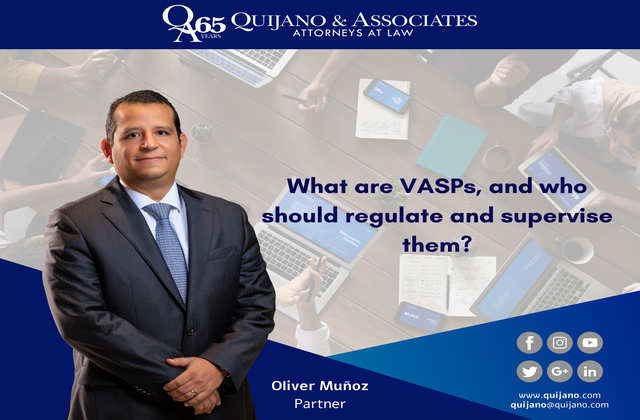What are VASPs, and who Should regulate and supervise them?

Virtual Asset Service Providers (VASPs) are entities that offer services related to virtual assets, such as cryptocurrencies. According to the Financial Action Task Force (FATF), VASPs engage in activities such as:
1.Exchanging virtual assets for fiat currencies or other virtual assets.
2.Transferring virtual assets.
3.Safekeeping or administering virtual assets.
4.Participating in or providing financial services related to initial offerings of virtual assets.
Who Should Regulate and Supervise VASPs?
There are various regulatory approaches, and the decision depends on the legal framework and institutional capacity of each country. However, international principles recommend that VASPs be regulated by authorities with clear mandates to address inherent risks, such as money laundering, terrorist financing, and investor protection.
1. Securities Market Regulator
In many countries, the securities regulator oversees VASPs due to the similarities between some virtual assets and traditional securities. This approach facilitates the integration of traditional and digital financial markets.
Example: In the European Union, the Markets in Crypto-Assets Regulation (MICA) establishes a uniform framework to regulate digital assets and designates national financial authorities as responsible for supervising related service providers. MiCA also requires VASPs to meet authorization and consumer protection standards.
2. Specialized Digital Assets Regulator
In other cases, a specialized regulator is established to address the unique technical challenges posed by virtual assets. These regulators focus on innovation and risks specific to the sector.
Example: Malta created the Malta Digital Innovation Authority (MDIA) to oversee the digital asset ecosystem.
3. Shared Supervision by Multiple Regulators
Some countries adopt a hybrid model:
• Securities regulators oversee activities related to tokens that qualify as securities.
• Anti-money laundering authorities regulate financial compliance aspects.
• A specialized regulator addresses technical and innovation-related risks.
Example: In the United States, VASP supervision is fragmented and depends on the specific activity, involving agencies such as the SEC, CFTC, and FinCEN.
The Case of the MiCA Regulation
The Markets in Crypto-Assets Regulation (MICA), approved in 2023 by the European Union, is considered a global regulatory milestone. MiCA aims to:
• Establish a uniform framework for digital assets across the EU.
• Require VASPs to obtain specific licenses to operate within the bloc.
• Ensure consumer protection and mitigate risks associated with crypto-assets.
• Promote responsible innovation within the digital ecosystem.
MiCA assigns primary supervision to national regulators, while the European Securities and Markets Authority (ESMA) will play a coordinating and supervisory role in specific cases.
The Current Situation in Panama
In Panama, the regulation of Virtual Asset Service Providers (VASPs) is still in its early stages. To date, no specific framework for VASPs has been implemented. This leaves a regulatory gap concerning the supervision of activities related to virtual assets.
We would suggest that the securities regulator, namely the Superintendence of the Securities Markets (SMV), take on this responsibility, given its expertise in supervising financial assets and its ability to enforce measures that ensure investor protection, transparency, and market stability. However, this would require a review and amendment of Panama’s Securities Law. We believe this approach would align Panama with international best practices and facilitate the integration of digital assets into traditional financial markets.
Conclusion
The regulation and supervision of VASPs depend on each country’s approach, but international experience shows that a clear and well-defined framework is key to mitigating risks and fostering trust in the market. Specialized or financial market regulators can provide an adequate structure to address the challenges of digital assets while promoting innovation and protecting investors.




